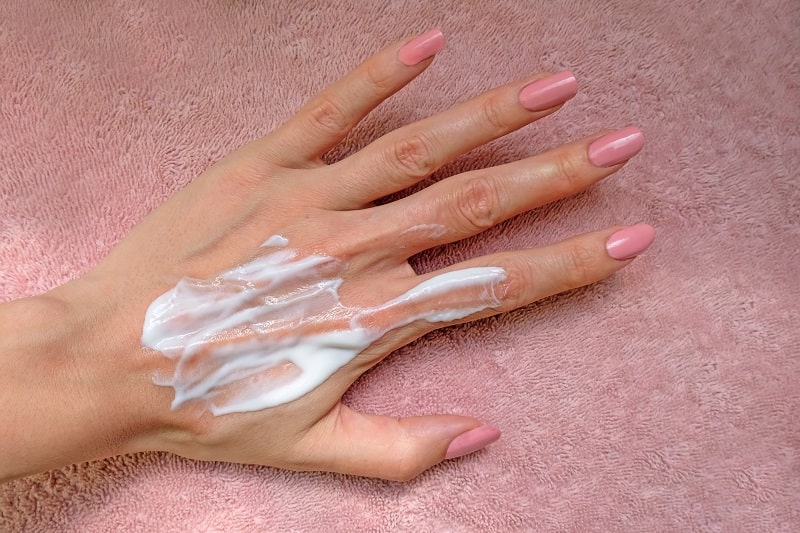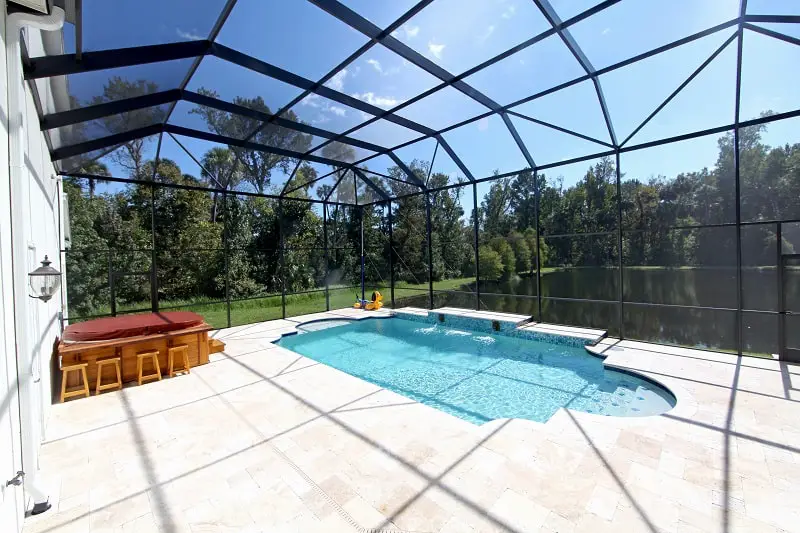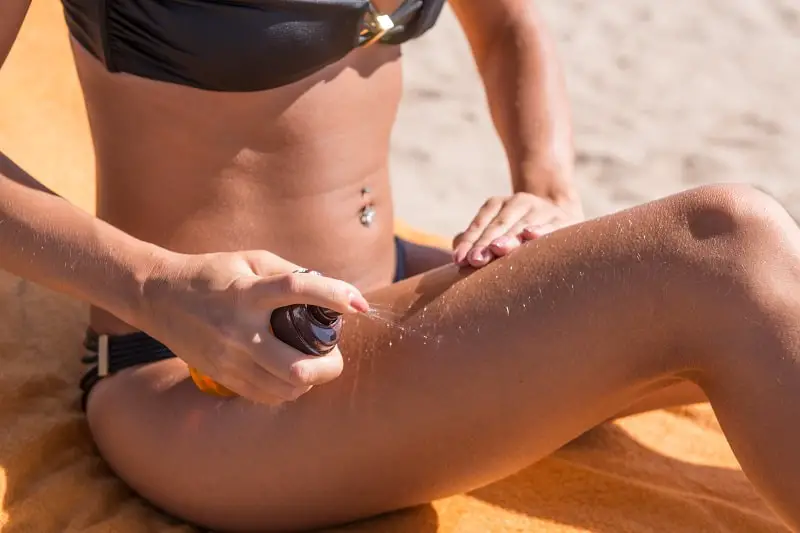How long does a tan last? Well, the answer depends on if you have a natural tan or one from a sunbed. For either case, you can expect a range of about a week, with variations from that estimate since your skin changes constantly.
What is important to remember is that a tan lasts only as long as your skin’s cell cycle regardless of the actual tanning process itself. Honestly, tanning can be viewed as a frightening prospect.
With the risk of getting an uneven tan, developing early wrinkles, and the even larger looming risk of skin cancers, one can’t help but be overly cautious and slather on copious amounts of sunscreen at a single mention of sunlight.
This article will review how long a tan would last normally, as well as answer some other tanning-related questions that could help put your mind at ease about getting a tan.
From a suntan, spray-on tan, tanning cream, and the use of sunbeds: We will cover it all. Without further ado, put your feet up, relax, and let’s get reading!
How Long Does A Natural Tan From The Sun Last?
A natural tan from the sun lasts 7-10 days on average. By exfoliating your skin prior to getting it tan and by keeping your skin regularly moisturized, you can possibly see your tan exceeding that timeframe by a couple of days.
That being said, take care to not expose your unprotected skin to the sun’s ultraviolet (UV) rays for extended periods of time. Your skin is important: Take care to wear sunscreen whenever you go outside.
Naturally, this advice also extends to applying sunscreen to your face and neck, as long as it is lightweight enough and specially formulated to be suitable for sensitive skin. The safety of facial sunscreens tends to come down to the ingredients.
More often than not, the best SPF products are mineral sunscreens; since they avoid the use of chemicals to block out the sun’s rays and rely instead on implementing titanium dioxide and zinc oxide to protect the skin. Even better? Both titanium dioxide and zinc oxide are classified as safe by the FDA.
In addition to this, there are also tons of makeup options that already have SPF incorporated into the base product. Whether it is a tinting lip balm or a foundation primer, nowadays you can find sunscreen in just about anything.
How Long Should I Tan Outside?
A max of an hour should be spent outside for tanning purposes. However, this does depend on the type of day it is; during particularly sunny days, you would probably want to stick to a total of 15-30 minutes of tanning outside.
Moreover, before sticking to a specific time set to tan, get an idea of how sensitive your skin is to the sun. For example, if you’re one to burn quickly, do your best to only spend a few minutes tanning no matter the weather (around a maximum of 15 minutes).
Now, if you still feel unsure about how long it is OK to stay outside for, you can always check out a sunbathing calculator, here. The calculator will assess the information you provide about the conditions outside and in turn tell you the total time you can safely spend outside, considering that you reapply sunblock regularly.
There is no point in suffering through a severe sunburn: It won’t have any effect on the depth of your eventual tan. Saying this, some people do experience fast-developing sunburns that simply get extremely little amounts of tan afterwards.
During tanning, there would be a point in time where you would rotate from one side to another to try and encourage an even tan. Honestly, I would recommend laying out on your side as well. If you feel like a rotisserie chicken while laying out in the sun, you’re probably doing it right!
How Long Does Your Tan Last After A Tanning Bed?
After a tanning bed, your tan will likely last anywhere from a week to 3 weeks. Following the recommendations as laid out by Palm Beach Tan, the tanning process does not stop once you get off the sunbed.
Since the color will take time to develop, you should avoid any activities that otherwise hinder this (like showering). This will only be a few hours of a wait, though, and you don’t need to worry about avoiding washing for a whole day.
Now, although the above is true, the FDA does suggest waiting 24 hours between tanning sessions for optimal color and—more importantly—skin protection. Going off of this information, don’t jump the gun if you get in from a tanning session and don’t see any immediate change.
Take a breath. After a tan, you should:
- Drink a lot of water
- Trust the process (and the professionals)
- Moisturize
- Eat some dark chocolate
- Munch on antioxidant-rich fruits
If the next day comes and your tan isn’t showing up like you hoped it would, make another appointment for a second session. In most cases, a couple of weeks of regular tanning (about 3 sessions a week) is as long as it takes for individuals to be truly satisfied with their tan.
Sometimes it takes a couple of tries to really get that glowing color you are looking for, and that is absolutely the norm. After all, nothing ventured, nothing gained.
How Long Does A Tan Take In A Tanning Bed?
A tan from a tanning bed can take a couple of weeks full of sessions to really get established. Since sunbeds give off amplified UV rays—3 to 5 times more intense than the afternoon sun—most exposure time will only be around 10 minutes at the most.
Generally, 10 minutes is more than enough time for the rays to penetrate your skin and begin forming a tan. With this in mind, it should also be noted that not all sunbeds are the same, nor are the lamps used to generate the rays.
Stick to whatever recommendations the employees at the tanning salon are suggesting; they are likely more familiar with their machines than you are, and they have the experience to know the limitations of their tanning beds.
How Do You Keep A Tan After A Sunbed?
The most important thing to keep a tan after a sunbed tanning experience is to avoid showering for at least 4 hours after the tanning session. The color you are trying to achieve takes some time to set in and develop, so you do not want to interrupt that process.
However, this is mostly only the case for those who have added in a bronzer, any tanning lotions, or spray tans on top of laying in a sunbed. Which, honestly, is a lot of folk out there.
Both bronzers and tanning lotions are incredibly popular additives to sunbed tanning because they work to enhance the overall look of the tan. Though, before investing in these products you should make sure that they are compatible with tanning beds.
As opposed to popular belief, not all are, and tanning lotions can actually end up damaging the acrylic that is on the sunbed. If you are unsure whether or not your lotion is safe for indoor tanning, check with your salon beforehand.
Oftentimes, tanning salons have their own list of recommended lotions and bronzers, or they sell in-store products. Most of the time, you will be able to find indoor tanning lotions at on-site locations like Ulta Beauty, or through online retailers like Amazon.
Why Isn’t My Tan Fading?
If your tan isn’t fading, your cells have likely been damaged or discolored by extensive, repetitive sun exposure. The melanin produced as a result of tanning will normally fade after a time, and your skin would return to its normal color. As can be expected, this is most people’s experience with any sort of tanning process.
However, there are times when the cells become damaged, and that color just won’t fade. What could end up happening is the development of hyperpigmentation in some areas of your body that is frequently exposed to sunlight.
Hyperpigmentation, meanwhile, is very common and often harmless. The condition can be treated professionally after an assessment is made confirming that there is nothing medically malignant tied to the hyperpigmentation.
On another hand, it can also be handled with some specially formulated serums or natural at-home remedies. As you could probably guess, aloe vera has proven to be mildly effective in combating skin discolorations like hyperpigmentations.
Others may suggest the daily application of diluted apple cider vinegar or green tea instead. When it comes down to it, the treatment of hyperpigmentation comes down to you and the steps you feel most comfortable taking.
There is no right or wrong way to go about it, though I would recommend getting a medical assessment at some point if you at all find yourself worried about the discoloration, or if further symptoms crop up. For more detailed information on why your tan is not going away. Read our post titled “Why Is My Suntan Not Going Away?”
Final Thoughts: How Long Does A Tan Last?
In conclusion, tans are completely subjective. Some people find themselves falling in love with everything there is about tanning, while others try it and decide it isn’t for them.
That being said, what is important is that when tanning, you are at least knowledgeable about it: what to expect, the risks, the options, things like that. Overall, all tans usually last a maximum of 2 weeks (give or take) and a minimum of 7 days.
This will be the case whether you lay in the sun, in a tanning bed, or apply it yourself by spray or lotion. Also, speaking of tanning beds, the effects of just 5 minutes in one can be compared to that of tanning outside without any SPF for an hour.
Their concentrated UVA rays make for an efficient tan time, but a slightly higher risk of early aging, eye damage, and skin cancers. Meanwhile, experts don’t view outdoors tanning too favorably either because, well, ultraviolet radiation is what it is.
Your best bet for safe tanning would be the sunless approach. Now, let’s say you’ve figured it out. You have your perfect tan, and now all that is left to do is enjoy it, when suddenly, you realize that your tan won’t fade? At all?
This hyperpigmentation would often be an indication that your cells got pretty damaged in the sun from extreme or repeated exposure. Though this tends to be harmless, it would not hurt to have a medical professional take a look.
Otherwise, there are plenty of ways to manage the effects of the discoloration. When thinking about tanning, it is vital to know the risks involved so you can make an informed decision, and with most methods requiring repeated applications and various sessions, you will be glad you did.
If you enjoyed reading this article, check out some of our other amazing blog posts:






